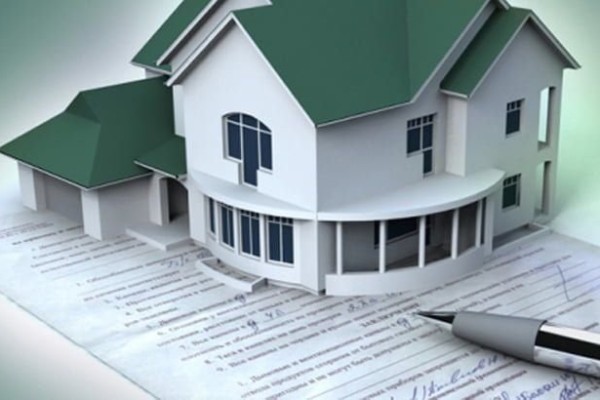- Oct 11, 2023
- Real Estate
- 1,732
Here is a detailed article about new architectural trends :
New Architectural Trends and the Journey to the Future of the Construction Industry
The construction industry has played a significant role throughout history in meeting the fundamental needs of humanity . However , changing technologies , environmental awareness , and economic demands have led to a transformation in the construction sector . At the heart of this transformation are new architectural trends . In this article , we will explore what new architectural trends are , why they are important , and how they may play a role in the future .
Definition of New Architectural Trends
New architectural trends represent the latest developments in the world of construction and design . These developments encompass new ideas and technologies in the design , construction , sustainability , energy efficiency , and aesthetics of buildings . New architectural trends aim to have a positive impact on both the users of buildings and the environment .
Why New Architectural Trends Are Important ?
Sustainability
Environmental issues and limited resources have increased the importance of sustainability . New architectural trends focus on sustainability principles , contributing to the conservation of natural resources through features like green buildings , energy-efficient designs , and waste reduction strategies .
Technological Advancements
Today , the availability of technologies such as new materials , artificial intelligence , 3D printers , and digital design tools has grown in the construction industry . New architectural trends harness these technological advances to enable more efficient , safe , and creative project implementations .
Human- Centered Design
New architectural trends that prioritize the user experience aim to enhance people's quality of life. Ergonomic building designs , the use of natural light , open spaces , and green areas enable users to lead healthier and happier lives .
Aesthetic Value
Aesthetics have always been a significant part of architectural design . New architectural trends aim to combine functionality and aesthetics to create striking and unique structures . This enriches cityscapes and preserves cultural heritage .
Examples and Applications
Green Buildings
Green buildings are designed to meet sustainability goals , including energy efficiency , water conservation , and reduced environmental impact . They may include features like green roofs , solar panels , and water recycling systems .
Smart Cities
Smart cities showcase the impact of technology on urban management and livability . Infrastructure connected to the internet, traffic management , and energy efficiency contribute to making cities more efficient and sustainable .
Modular Construction
Modular construction offers a fast and cost-effective building process by using premanufactured and assembled building components . This method can reduce costs and save time on large-scale projects .
Future Role
New architectural trends will continue to shape the construction industry in the future . Increasing populations , environmental issues , and technological advancements will require the construction of smarter , more sustainable , and human-centered buildings and cities . Additionally , changing work and lifestyle patterns in the post- pandemic era will necessitate a reevaluation of space requirements .
Future Role and Impacts
More Sustainable Buildings and Cities
Sustainability will remain at the core of future construction projects . New architectural trends will offer more innovations in reducing energy consumption , minimizing carbon footprints , and conserving natural resources . Technological developments like green buildings , energy production , and storage systems will pave the way for a more sustainable future .
Smart and Connected Cities
Smart cities will be a comprehensive solution for efficient city management and improved quality of life. High- speed internet, sensors , artificial intelligence , and big data analytics will form the foundation of smart cities , enhancing traffic management , energy conservation , and environmental monitoring . This will help cities become more sustainable and human-centered .
Digital Design and Manufacturing
Digital design and manufacturing technologies will continue to transform the construction industry . 3D printers , robots , and artificial intelligence will make it possible to construct more complex and unique structures at a faster pace . This has the potential to reduce costs , shorten construction timelines , and increase design freedom .
Human- Centered Spaces
Future buildings and cities will embrace more human-centered design elements to enhance the user experience . This includes open spaces , the use of natural light , air quality , and spaces tailored to different lifestyles . Design elements that promote health and well-being will also gain importance .
Addressing Global Challenges
Global issues such as climate change , population growth , and natural disasters will influence the future role of the construction industry . New architectural trends will be designed and built to provide solutions to these challenges . For example , flood - and earthquake-resistant buildings , eco-friendly infrastructure projects , and sustainable energy sources can help address these issues .
Conclusion
In conclusion , new architectural trends are a key factor that will lead the construction industry towards a better future . These trends combine sustainability , technology , human-centered design , and aesthetic value to shape the buildings and cities of the future . Therefore , focusing on these trends is crucial for architects , engineers , and designers to contribute to the creation of a more livable future for the world .
Popular Categories
Popular Posts

Considerations for Real Estate Investment

Benefits of Real Estate Investment

Real Estate Investment in Different Countries

What is Golden Visa?
